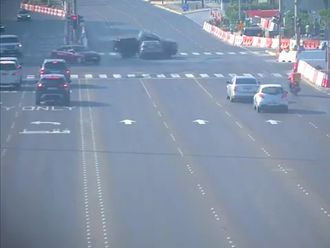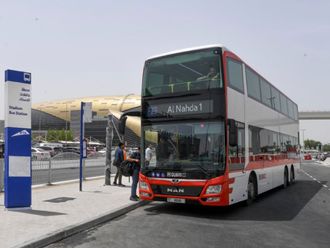The nineties witnessed the first wave of foreign investment into India, when western fund managers spoke of the "roaring tiger", the potential provided by a population of nearly a billion people.
During those boom days the BSE Sensex rose to over 6,000. India, now into its second billion, begun to look tiger-less as the index fell towards 2450 in 2001.
The roar's back. A 50 per cent rise since April (year to date 30 per cent) has seen the index swing towards 4,450 and, according to Murthy Nuni of Marshal Fund Partners, this is just the beginning.
"NRIs have been put off by recent equity volatility but shrewd investors will see another year or so left in this rally", Nuni states confidently.
What substance is there to back this statement? Nuni chose six drivers, encapsulating the lot is the story of old economy versus new economy, a global story yes, but significantly more pronounced in India than in, say, G7.
"Old India" is a story of conglomerates which didn't need to change. They were making big bucks in rupee terms. Nuni exonerates Reliance as "always efficient", but the old ways of Tata and Birla were not endowed with good corporate governance.
What happened next was the technology boom, "new economy" wizards moving in to dominate 50 per cent of the total Sensex value of $200 billion by 1999-2000.
This had revolutionary ramifications on the conglomerates, how, they wondered, did these new guys emerge and raise capital values so easily?
This led to soul-searching exercises, streamlining, and improved corporate governance, the benefits of which are being felt today.
This provides us with driver number one.
However, it wasn't all rosy for the new boys. As the new economy grew it took on a highly correlated pattern with the Nasdaq. After all, a lot of "new boy" money was raised in the United States.
We all know what happened next, roller-coaster; technology, media, telecom went from 14 per cent of S&P's "Nifty Fifty" top 50 firms in 1998, to 45 per cent in 2000, back down to 16 per cent in 2003.
This gives the Indian index the Nasdaq-like spike. For Nuni this is a period of temporary correlation with western markets. Now that the "new boys" aren't so dominant, the curious mix of old boys and government will be restored to their primary driver status.
Driver number two was a surprise to western ears, but logical, it rained a lot. Good monsoon after three dry years were big news for an economy with a 30 per cent rural weighting.
Rain means crops, crops mean money, money means tractors, four-wheel drives and consumer spend on non-durables.
For number three we need to look at privatisation, which Indians commonly call "disinvestment", indeed they have a "disinvestment minister", Arun Shourie, tasked by Vajpayee with driving through revolutionary reform.
I asked whether this made Vajpayee a visionary. "Maybe," says Muni, "but the IMF have a hand in forcing India to sell assets to cut its budget deficit."
The notable examples of disinvesting public sector units are VSNL (telecoms) where 26 per cent was sold to Tata, and IPCL (petro-chem) where the same slice was sold to Reliance.
The big test for Vajpayee will be HPCL (petrochem), where a sell off will inevitably lead to job losses, providing political enemies with free ammunition on the one hand, and an impressive list of potential buyers on the other, including Shell, Reliance, Kuwait Petroleum, and Saudi Aramco.
"The outcome" says Nuni, is a "probable 100 per cent increase in stock value of any PSU floated into the market."
Driver number four has to include the banking system. Here two surprisingly archaic burdens have been lifted from the banking system.
The first relates to the "Securitisation Bill" approved by the Lok Sabha. This allows banks to chase defaulters with greater efficiency than before (how could they possibly survive without that ability?).
Second, the liquidity ratio has been reduced from 40 per cent (huge) to just above 30 per cent, allowing banks to develop their strategies with more conviction.
Add in the fact that banks were forced to buy government securities in a falling interest rate environment and you have a scenario that puts a windfall appreciation onto bank balance sheets. Rising stock values for this sector, clearly on the cards.
Driver number five is derived from number three in that monies from the sales of PSUs will be utilised to develop an infrastructure designed to sustain economic development.
The most stunning testament is the "Golden Quadrangular Project", a highway that reaches the four corners of India. The result should have massive short-term consequences for the construction sector and medium-term benefits for all parts of the economy that relies on moving things by road.
Finally, any analysis of the Indian economy isn't complete these days without reference to its business processing industry - call centres to some people.
Having been a "customer" on the receiving end of a call from HSBC's credit-card fraud department, a UK telephone number with an Indian lady sitting in India, I can readily provide a reference that the system works.
They discovered the fraud at no loss, and treated me with more respect and efficiency than a man of my calibre deserves.
The author is the managing director of Mondial (Dubai) LLC
Roaring tiger back in the streets
The nineties witnessed the first wave of foreign investment into India, when western fund managers spoke of the "roaring tiger", the potential provided by a population of nearly a billion people.











